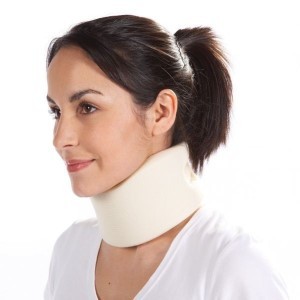They are the cliches of the courtroom. The defendant appears before the jury with a cane, a cast, and a soft cervical collar. Looks good, but are they of any use? There are really two questions to answer: does a soft collar limit mobility and does it reduce pain? Amazingly, there’s very little literature on this ubiquitous neck appliance.
First, the mobility question. It’s a soft collar. It’s made of sponge. So it should be no surprise that it doesn’t reduce motion by much, about 17%. But it is better than no collar at all.
What about pain control? One small retrospective review looked at the effect of a soft collar vs no collar at all on pain after whiplash injury. Keep in mind that the definition of “whiplash” is all over the place, so you have to take it with a big grain of salt. But the authors found that there was no difference in subjective pain scoring with or without the collar.
Another much older study (1986) compared a soft collar with active motion after whiplash. Subjects who actively moved their neck around had less subjective pain after 8 weeks.

Bottom line: The soft cervical collar keeps your neck warm. Not much else. And in my experience, prolonged use (more than a few days) tends to increase uncomfortable neck spasms. So use them as an article of clothing in Minnesota winters, but not as a medical appliance.
Related posts:
References:
- A comparison of neck movement in the soft cervical collar and rigid cervical brace in healthy subjects. J Manipulative Physiol Ther. 34(2):119-22, 2011.
- The effect of soft cervical collars on persistent neck pain in patients with whiplash injury. Acad Emerg Med. 3(6):568-73, 1996.
- Early mobilization of acute whiplash injuries. Br Med J (Clin Res Ed). 292(6521):656-7, Mar 8 1986.



